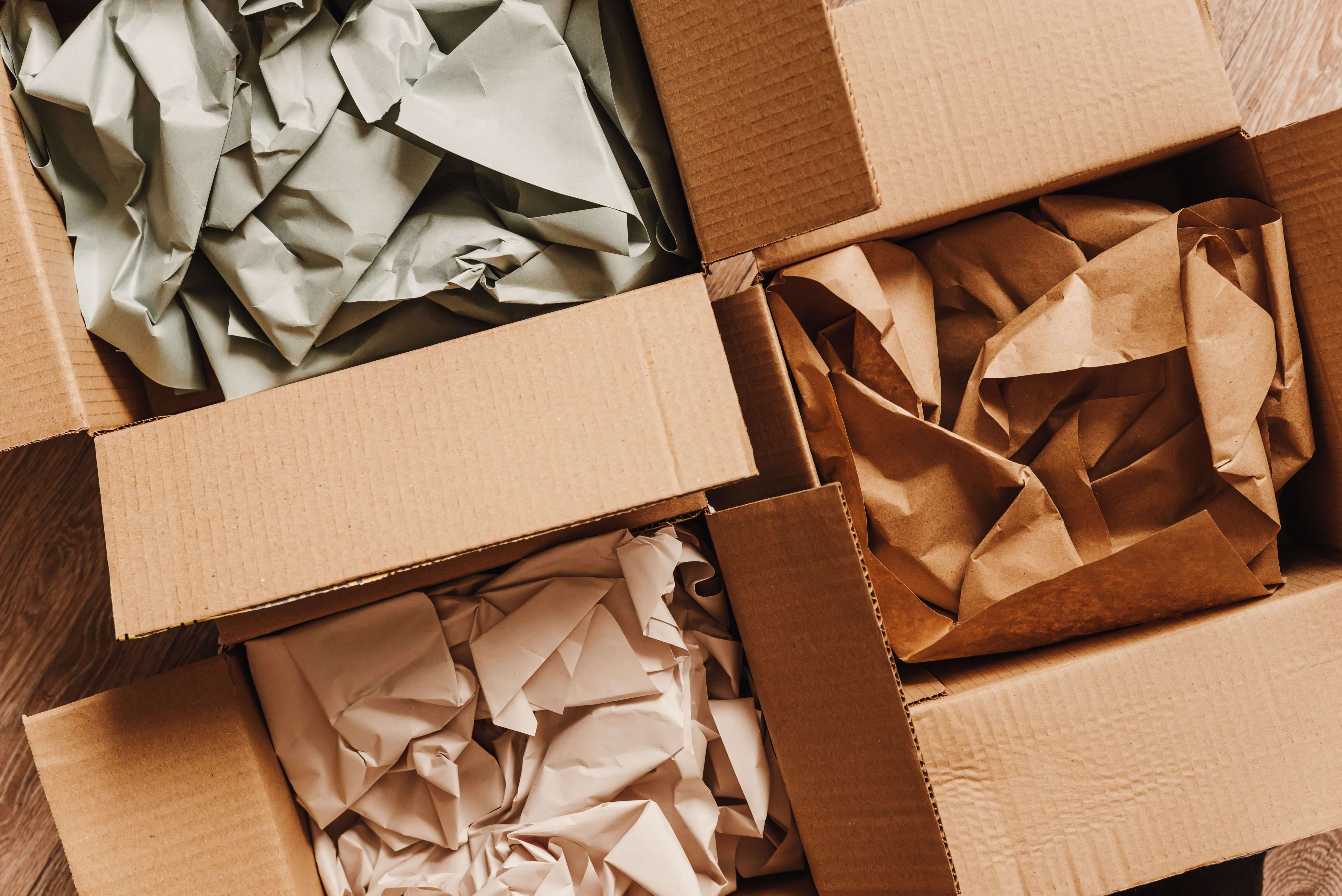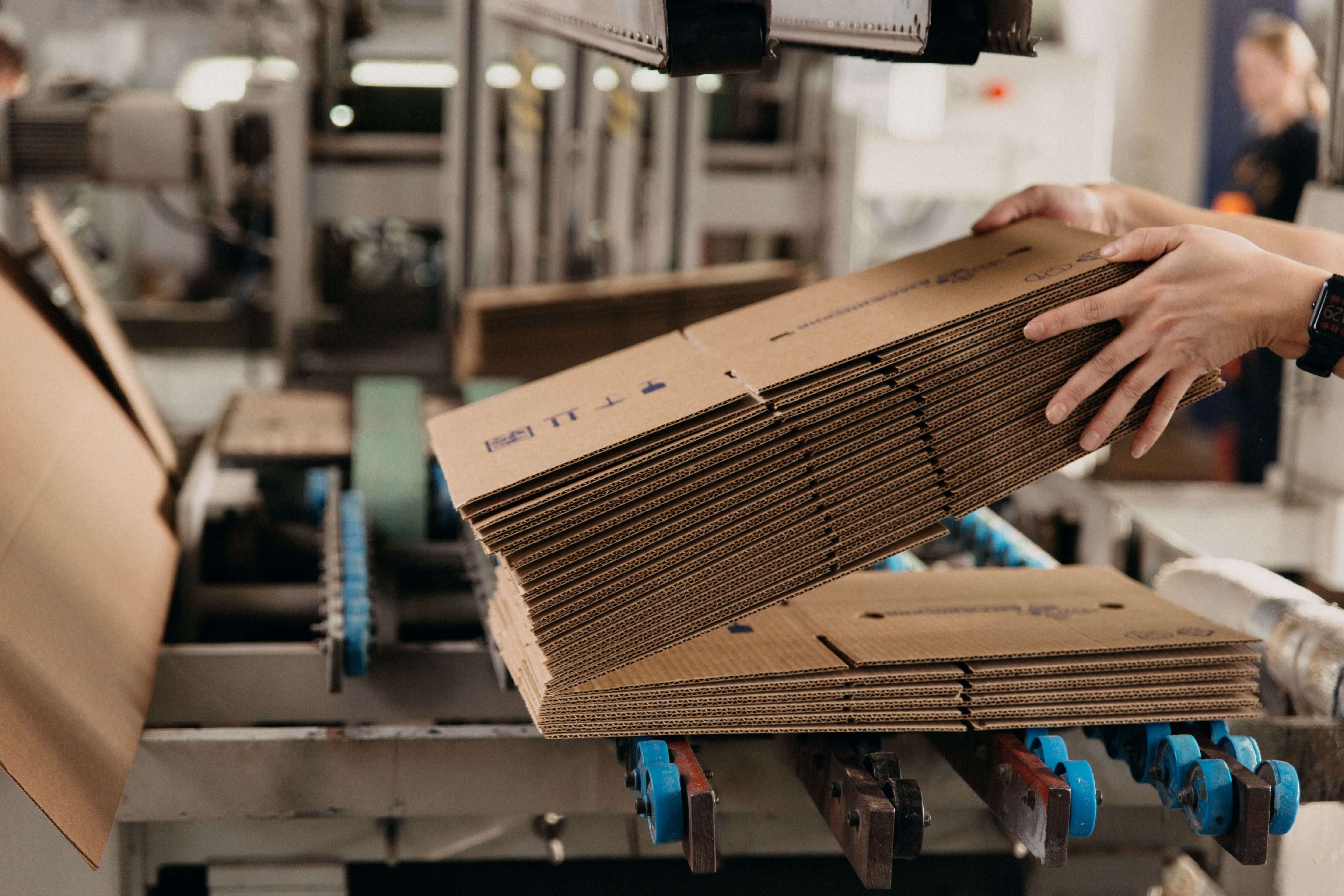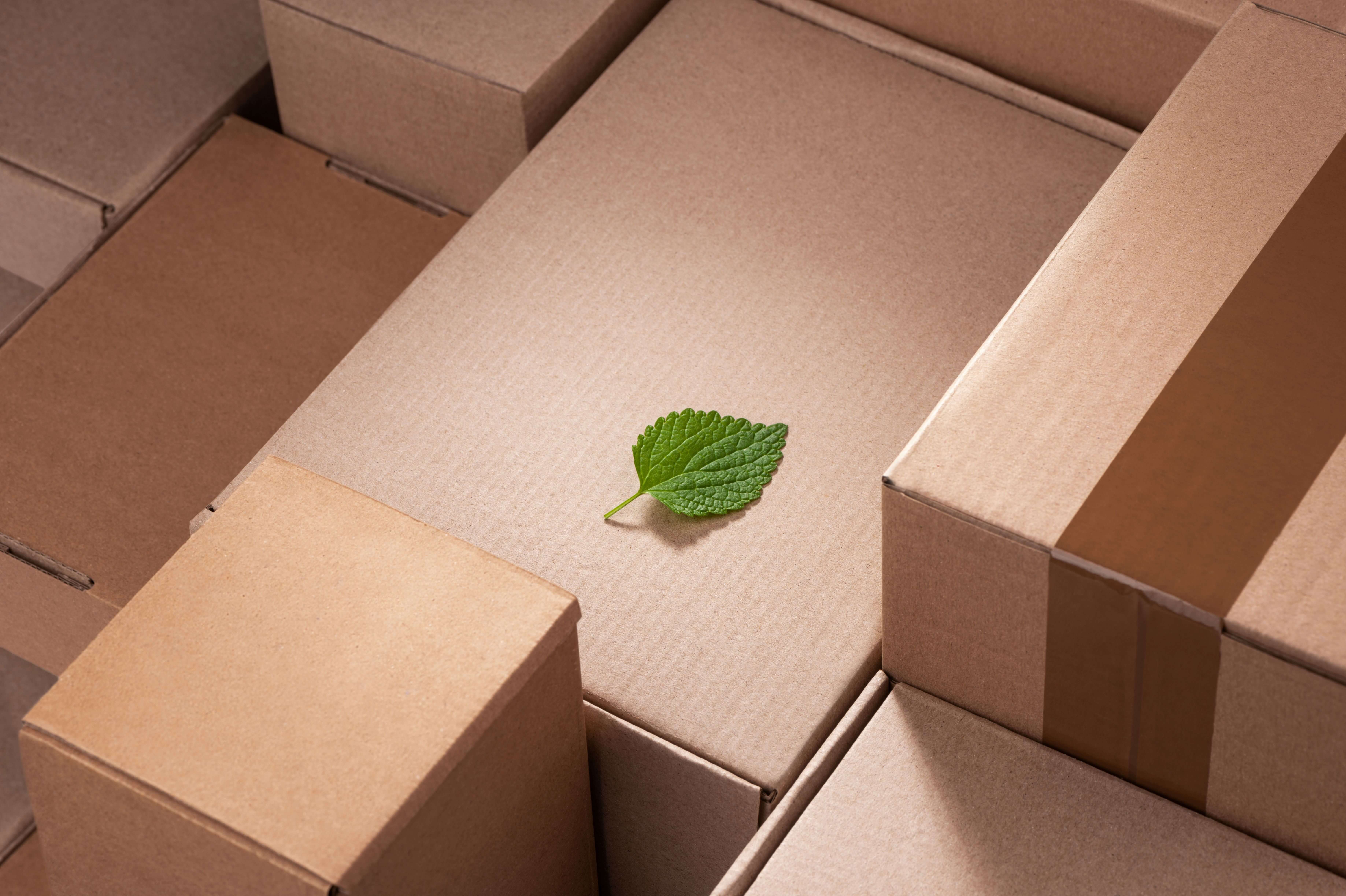A Guide to Environmentally Friendly Materials for Packaging
23rd Apr 2024
Environmental consciousness is becoming more important than ever, and choosing the right packaging can make a significant difference. Beyond being able to ship a product, packaging must consider the lifecycle of the materials used and their impact on our planet.
This guide explores various environmentally friendly packaging options, shedding light on sustainable, compostable, and recyclable solutions that businesses and consumers can adopt. We explain what makes packaging sustainable, the most effective materials to use, and how companies like ours at ASC Direct are taking steps to reduce the environmental footprint of packaging.
What is Sustainable Packaging?
Sustainable packaging refers to the use of packaging solutions that have minimal environmental impact and are beneficial throughout their lifecycle - from production to disposal. The goal of sustainable packaging is not only to reduce waste and greenhouse gas emissions but also to utilise resources more efficiently and encourage recycling and reuse.
Sustainable packaging materials are often sourced from renewable resources, are easy to recycle, and require less energy to produce. This can include materials like paper from sustainably managed forests, biodegradable plant-based plastics, and recycled materials. The design of sustainable packaging also plays a crucial role, focusing on reducing material use and optimising logistics to lower carbon footprints.
By adopting sustainable packaging, companies can significantly reduce their operations' environmental impact. This proactive approach contributes to resource conservation, helps manage waste effectively, and promotes environmental stewardship. Sustainable packaging is more than an ethical choice, but a practical one that aligns with the growing consumer demand for environmentally friendly products and practices.
What is the Most Sustainable Packaging?
Determining the most sustainable packaging requires examining several factors, including the source of the materials, the energy used in production, and the feasibility of recycling or composting after use. The most sustainable packaging is typically made from renewable materials that have minimal impact on the environment throughout their lifecycle.
Paper Packaging
Often cited as one of the most sustainable options, paper packaging is made from wood pulp and is widely recyclable. When sourced from sustainably managed forests and processed using eco-friendly methods, paper packaging can be both renewable and biodegradable. It is a versatile option, suitable for everything from boxes to filler material.
Plant-based Plastics
These are made from biological sources such as corn starch or sugarcane, reducing dependence on fossil fuels. They are often compostable and produce fewer greenhouse gases during production. However, their actual environmental benefit can depend heavily on how they are processed and disposed of.
Recycled Plastics
Using recycled plastics reduces the need for virgin materials and the overall energy required for production. The recycling process for plastics can be complex and costly, but advancements in recycling technologies are improving its sustainability.
Corrugated Cardboard
Made from recycled paper or sustainably sourced wood fibres, corrugated cardboard is highly recyclable and biodegradable. It offers excellent protection while being lightweight, which reduces transportation emissions.

What is Biodegradable Packaging?
Biodegradable packaging refers to packaging materials that can break down naturally into non-toxic components when exposed to the environment, specifically by the action of living organisms such as bacteria and fungi. Unlike traditional plastic packaging that can persist in the environment for hundreds of years, biodegradable packaging decomposes relatively quickly, leaving behind water, carbon dioxide, and biomass that enrich the soil rather than polluting it.
Biodegradable materials are often made from plant-based substances like corn starch, wheat straw, and sugarcane. These materials are not only renewable but also require less energy to produce compared to conventional plastics derived from fossil fuels. Examples of biodegradable packaging include:
● PLA (Polylactic Acid): a plastic substitute made from fermented plant starch (usually corn) that is both biodegradable and compostable under industrial composting conditions.
● PHA (Polyhydroxyalkanoates): produced by microorganisms during fermentation processes, PHA biodegrades in soil and water environments, making it an excellent option for both durable and disposable packaging.
● Cellulose-based films: these are transparent films made from cellulose derived from wood pulp. They are not only biodegradable but also compostable, and they function similarly to plastic wrap.
Biodegradable packaging is particularly useful in reducing waste in scenarios where recycling is less feasible, such as with food packaging that becomes contaminated with organic residue. While biodegradable options offer significant environmental benefits, they do require specific conditions to break down effectively, typically needing industrial composting facilities that maintain the right balance of heat, moisture, and microbial activity.
How to Reduce Plastic Packaging
Reducing plastic packaging is crucial in the fight against environmental pollution and waste management issues. Here are practical ways businesses and consumers can cut down on plastic usage in packaging:
1. Opt for Alternative Materials
● Paper and cardboard: these are renewable resources and widely recyclable. They can replace plastic in many scenarios, such as in boxes, wrapping, and fillers.
● Plant-based plastics: bioplastics made from corn starch or other organic materials offer a compostable alternative to traditional plastics.
● Fabric: reusable fabric bags or wraps can be used in place of plastic bags or film.
2. Choose Bulk Packaging
● Buying or selling products in bulk reduces the amount of packaging needed per unit. This applies not only to consumer goods but also to the shipment of raw materials between businesses.
3. Reuse and Refill Systems
● Implementing a system where consumers can refill their own containers or returning packaging to the vendor for reuse can significantly cut down on plastic waste.
● Encouraging customers to bring their own containers or offering incentives for doing so can foster a culture of reuse.
4. Streamline Packaging Designs
● Evaluate the design of products and packaging to minimise the amount of plastic used. Simple changes, like reducing the thickness of plastic film or eliminating unnecessary plastic windows on boxes, can have significant impacts.
● Adopt designs that are easily recyclable by avoiding mixed materials that are difficult to separate and process.
5. Increase Education and Awareness
● Educate consumers about the importance of reducing plastic usage and provide clear instructions on how to dispose of packaging materials properly.
● Labelling products with disposal and recycling information can empower consumers to make environmentally responsible choices.
6. Support Policies and Initiatives
● Support or advocate for policies that encourage reduced plastic use and increase recycling rates.
● Engage with community recycling programs and support initiatives aimed at reducing packaging waste.
7. Shift to a Circular Economy
● Adopt business models that prioritise the circular use of resources, including recycling and composting, to create a closed-loop system where plastic packaging is continually reused and recycled.
Ima
How Does Packaging Affect the Environment?
Packaging plays a critical role in modern commerce, but it also has significant environmental impacts. The materials used, the energy consumed in production, and the end-of-life disposal processes all contribute to this footprint. Here's how various aspects of packaging affect the environment:
Resource Consumption
Packaging production consumes natural resources such as timber, petroleum (for plastics), minerals, and water. For example, plastic packaging relies heavily on fossil fuels, both for the raw materials and the energy-intensive manufacturing processes. Similarly, paper packaging, while renewable, requires significant amounts of wood, contributing to deforestation if not managed sustainably.
Energy Use and Greenhouse Gas Emissions:
The production of packaging materials involves high energy consumption, leading to the release of greenhouse gases, which contribute to climate change. The transportation of packaged goods further adds to these emissions, especially when products are shipped over long distances.
Waste and Landfill Overflow
A substantial amount of packaging ends up in landfills, where it can take hundreds of years to decompose, especially plastics. This waste contributes to landfill overflow, which is a growing problem globally. The decomposition process itself can release methane, a potent greenhouse gas, exacerbating climate change.
Pollution
Improper disposal and degradation of packaging materials can lead to pollution. Plastics, in particular, pose a severe threat as they break down into microplastics, which have infiltrated almost every part of the global ecosystem, from the deepest oceans to the highest mountains. Chemicals leached from decomposing materials can contaminate soil and water, affecting wildlife and human health.
Impact on Marine Life
Marine pollution due to packaging, especially plastic waste, is a significant environmental issue. Animals can ingest or become entangled in plastic waste, often with fatal consequences. The breakdown of these plastics into microplastics further affects marine biodiversity, as these particles can absorb toxins and enter the food chain.
Recycling Challenges
Although recycling can mitigate some of the environmental impacts of packaging, not all materials are recyclable, and the recycling rates for those that are, like plastics, remain low due to technical, economic, and behavioural challenges. Additionally, the recycling process itself consumes energy and resources, although it is generally less than what is required for producing virgin materials.

How ASC Direct Can Help with Environmentally Friendly Materials
At ASC Direct, we are committed to leading the charge towards a more sustainable future with our packaging solutions. We understand the importance of reducing environmental impact, and we have integrated this philosophy into every aspect of our operations.
Use of Recyclable Materials
We prioritise the use of recyclable packaging materials in all our products. By focusing on materials like corrugated cardboard, which not only offers excellent protection but is also widely accepted in recycling programs, we help ensure that the materials we use can be reprocessed and reused, reducing the need for virgin resources and minimising waste.
Tree Planting Initiative
For every 1,000 boxes we manufacture, we plant a tree. This initiative is part of our broader commitment to sustainability and helps offset the carbon footprint associated with the production of our packaging materials. By contributing to reforestation efforts, we not only help combat global warming but also support biodiversity and aid in water conservation.
Custom Packaging Solutions
We offer bespoke packaging solutions that are tailored to the exact needs of our clients. This custom approach ensures that no excess material is used, reducing waste at the source. By designing packaging that fits products perfectly, we also minimise the need for additional packing materials such as fillers and wraps, further reducing the environmental impact.
Education and Consultation
We believe in empowering our customers with knowledge about sustainable practices. Our team offers consultation services to help businesses understand their packaging options and make informed decisions that align with their environmental goals. By educating our clients on the benefits and practicalities of using eco-friendly packaging, we foster a community that values sustainability.
Shop Now
Ready to make a positive impact on the environment with your packaging choices? Shop now at ASC Direct for sustainable packaging options that align with your commitment to the planet. Try our innovative Box Builder tool to create perfectly sized packaging for your needs, eliminating unnecessary waste and reducing your environmental footprint.


